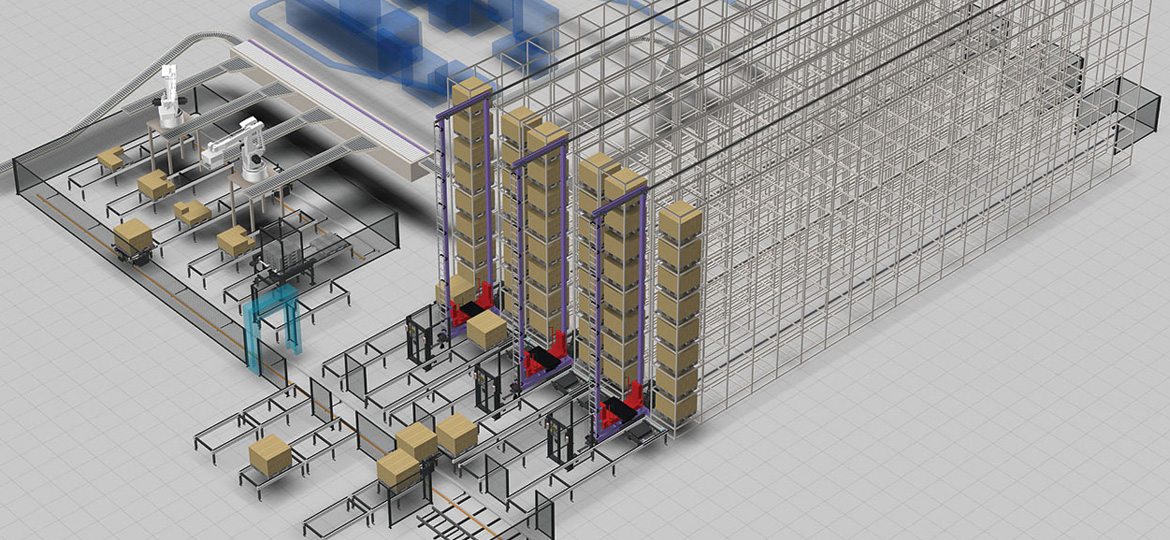Warehouses are going through a revolution with the adoption of automated technologies to enhance efficiency and reduce human errors and resource requirements. One such technology that is gaining significant popularity is Automated Storage and Retrieval System or ASRS for short. Let us deep dive into understanding what ASRS is, how it works, the benefits it provides and why it is considered a game changer for warehouse management.
What is an Automated Storage and Retrieval System?
An Automated Storage and Retrieval System or ASRS is a full-fledged automated warehousing system that uses robotics and software control to accurately store, retrieve and manage inventory items in designated warehouse locations with no or minimal human intervention. It uses vertical conveyors or horizontal conveyors to transport pallets, bins, boxes or other load carriers to desired locations within the warehouse storage racks. Computer systems monitor and control the whole process.
Types of ASRS
There are mainly three types of ASRS-
Vertical Lift Modules (VLMs): VLMs consist of vertical racks with inventory placed on pallets or shelves. A computer-controlled crane retrieves and places items as required. It provides high storage density in less space.
Horizontal Carousels: In this type, inventory is placed on continuously rotating shelves inside a cylindrical steel structure. Required items are retrieved by stopping the designated shelf section. It offers first-in, first-out order management.
Vertical Carousels: Similar to horizontal carousels but shelves are stacked vertically to maximize storage space utilization. A robot picks items from designated shelf location through openings in the carousel walls.
How does an ASRS work?
The basic working of an Automated Storage and Retrieval System is as follows:
– Inventory items are placed or deposited into the system through an input/output station.
– An automated retrieval/storage machine like a crane or shuttle acquires the precise location data of each inventory item from the central computer system.
– When a picking request is made, the system directs the machine to retrieve or deposit requested items from their defined storage locations.
– The machine travels to the designated location, picks or stores items using its manipulator arms, grippers or forks and delivers them to the input/output station.
– The item is then manually removed by operators from the station for packing, shipping or distribution within the warehouse premises.
Benefits of ASRS
Some key benefits that ASRS offers over traditional manual storage systems are:
– Higher Storage Density: It utilizes vertical space more efficiently through features like VLMs resulting in smaller footprint while providing higher inventory capacity.
– Accuracy: Automation eliminates human errors during retrieval/storage resulting in 99.9% accuracy and zero wrong picks. This leads to fewer inventory discrepancies.
– Increased Productivity: ASRS can handle a far greater volume of transactions per hour compared to manual systems by operating 24/7 with precision.
– Order Picking Speed: It speeds up order processing and fulfillment by enabling retrieval of multiple items together in one cycle. This shortens order turnaround time.
– Safety: By removing people from hazardous zones like elevated storage racks and high-bay environments, it offers a safer working environment for operators.
– Lower Operating Costs: Robotic solutions require fewer human resources for warehouse activities therefore lowering labor costs significantly over time.
– Space Utilization: As less floor space is needed, real estate and rentals costs see substantial reduction. Balance of capacities are better managed.
Challenges with ASRS
While ASRS delivers impressive benefits, some challenges involved with its implementation include:
– Higher Upfront Costs: Initial investment in infrastructure like automated cranes, conveyors, racks, software etc. is significantly higher than conventional systems.
– Downtime Impact: Unplanned breakdowns halt operations entirely until repairs are done. This affects overall equipment effectiveness of the system.
– Integration Complexities: Correctly integrating hardware with control systems and existing enterprise software can be a complex task requiring specialized technical expertise.
– Maintenance Requirements: Automated systems require diligent maintenance and parts replacement to ensure continued smooth performance over their lifespan
– Limited Payload Capacity: Most ASRS are designed for smaller loads like boxes, bins and trays. They may not suit heavy palletized warehouses.
The Future of ASRS
Research is ongoing aimed at enhancing ASRS capabilities through emerging technologies like Artificial Intelligence, machine learning, collaborative robots, augmented reality etc. Advancements like these will help ASRS become smarter, safer, efficient and work in closer collaboration with human labour in the future. As labour costs keep rising, deployment of ASRS is expected to grow significantly worldwide in the coming years with more sectors adopting automation for storage and retrieval operations. The technology will continue to revolutionize warehousing for years to come.
Automated Storage and Retrieval Systems present a compelling option for modern warehousing needs by boosting speed, accuracy and productivity while reducing costs and space requirements. With refinements, they are surely the future of efficient inventory management and order fulfillment across a variety of industries. Adoption of ASRS helps future-proof warehouse operations.
*Note:
1. Source: Coherent Market Insights, Public sources, Desk research
2. We have leveraged AI tools to mine information and compile it

